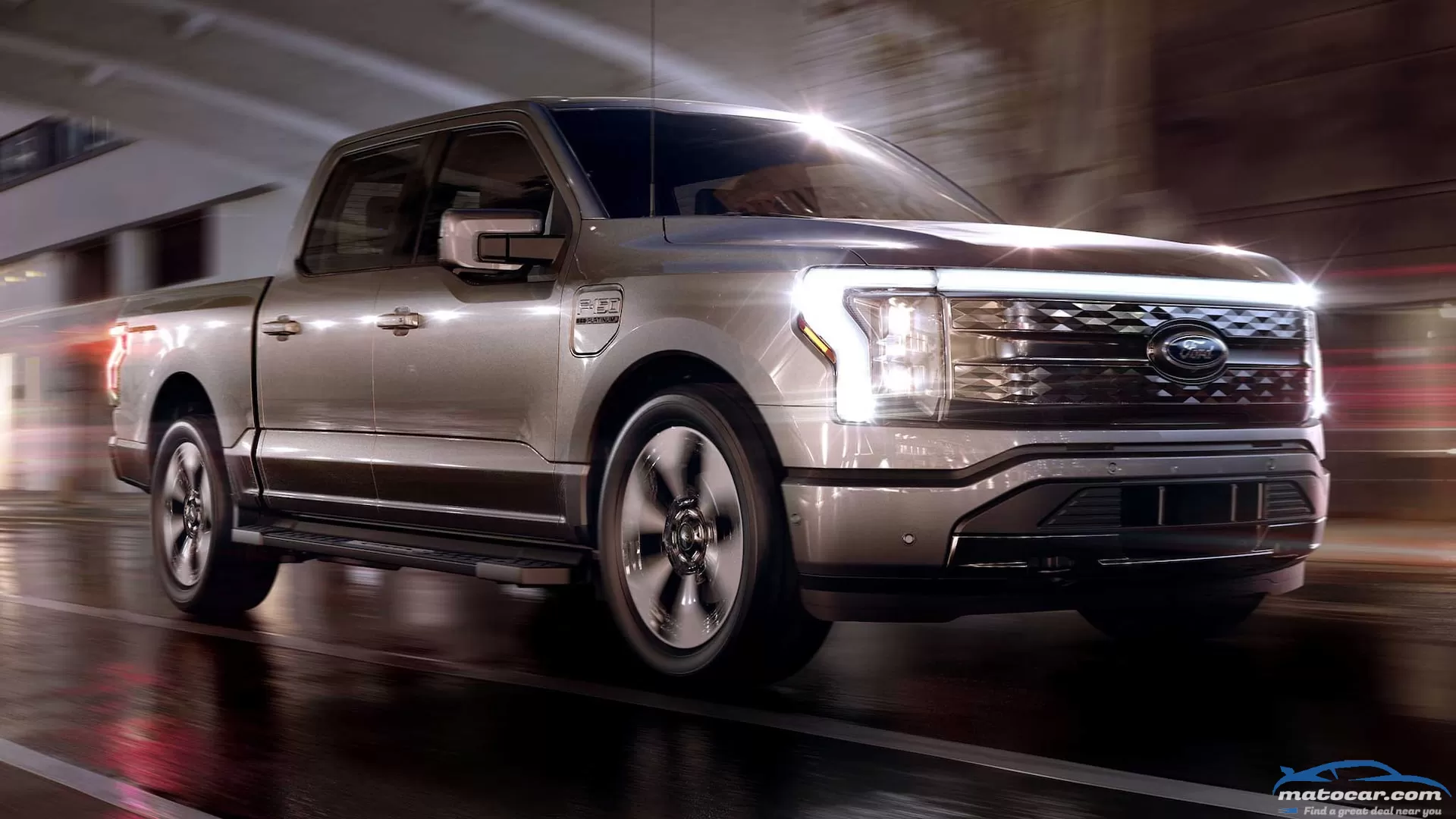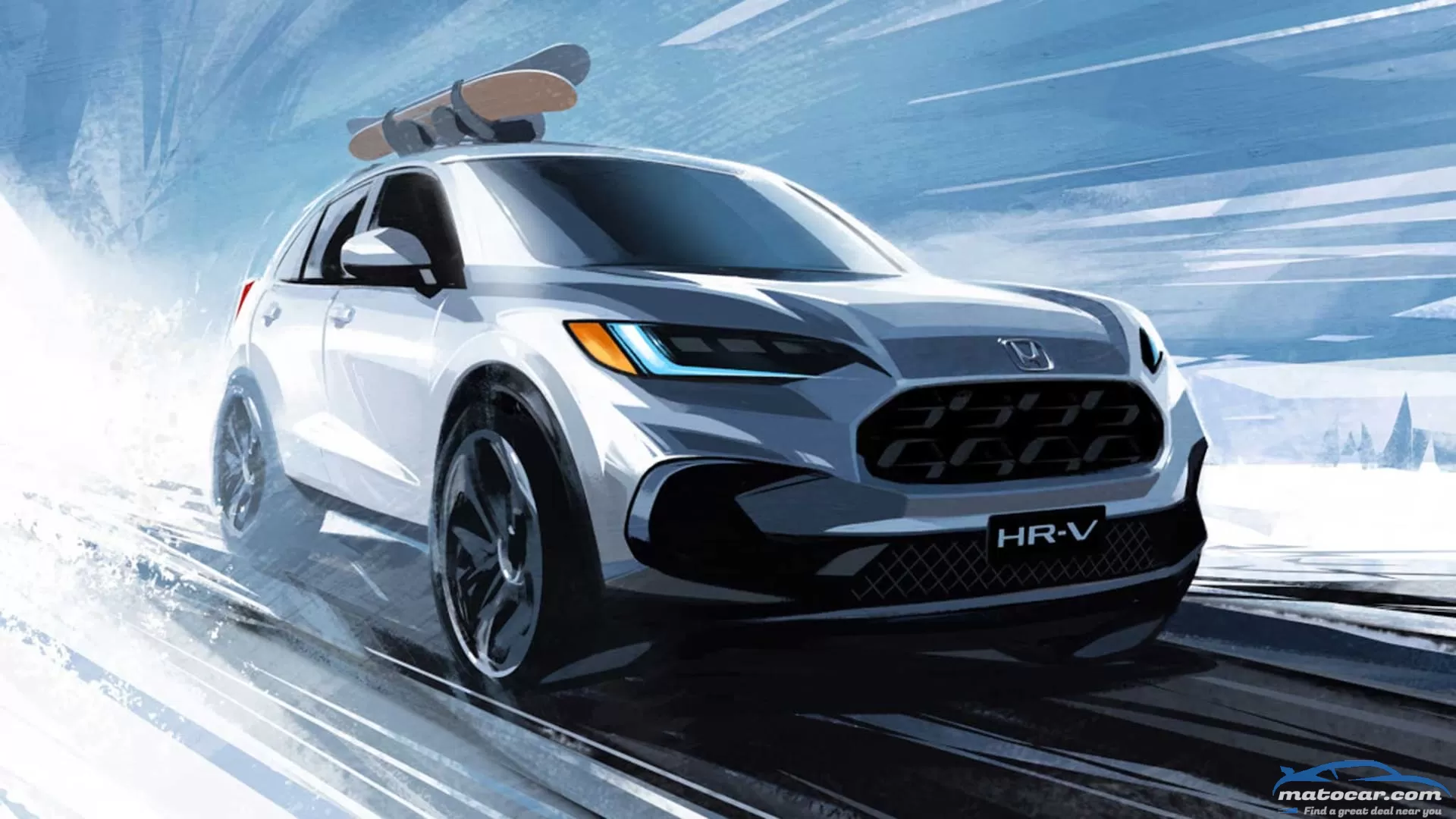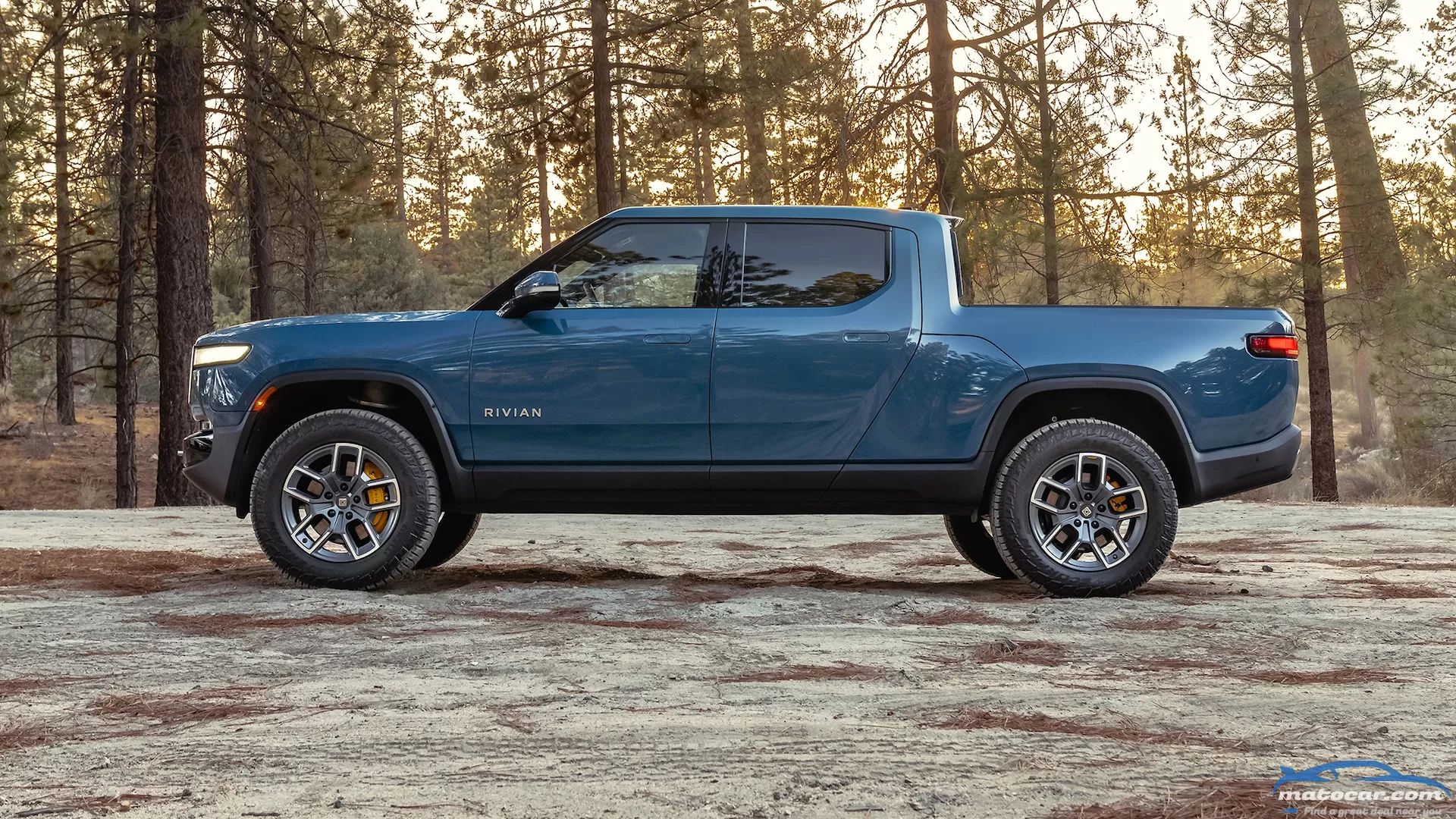F-150 Lightning's 300-Mile Battery Requires Shocking Upcharge

The 2022 Ford F-150 Lightning is a big deal. Ford made headlines around the world when it announced the new electric F-150, not just because it was electrifying the best-selling vehicle in North America, but because of how affordable it made the EV pickup. With the 2022 Rivian R1T and 2022 GMC Hummer EV Pickup starting at $68,645 and $110,295 respectively, the F-150 Lightning's $41,669 start price is seen as democratizing the electric pickup. With the release of the F-150 Lightning's configurator today, that affordable aura still appears to hold true—so long as you don't need to step up to the optional 300-mile Extended Range Battery.
Maverick-Sized Upcharge on F-150 Lightning XLT Extended Range?
All F-150 Lightnings come standard with a dual-motor all-wheel drive system good for 426 hp and 775 lb-ft of torque. That setup is paired with the 98-kWh Standard Range Battery, good for a Ford-estimated 230 miles of range (EPA figures are still pending), on the base F-150 Lightning Pro, Lightning XLT, and Lightning Lariat trims. The optional 131-kWh Extended Range Battery is available on the XLT and Lariat, and standard on the range-topping Platinum; it ups power to 563 hp and 775 lb-ft of torque, while range jumps up to a Ford-estimated 300 miles on the XLT and Lariat, and 280 miles on the top-level F-150 Lightning Platinum.
According to Ford's configurator, that 70-mile range cushion will cost F-150 Lighting XLT buyers a pretty penny. Starting at $54,669 with the standard battery, opting for the Extended Range Battery adds $19,500—roughly the cost of an entire Ford Maverick—to the F-150 Lightning XLT's base price.
In other words, that means the cheapest 300-mile F-150 Lightning will set you back $74,169. That's more than the MotorTrend Truck of the Year-winning Rivian R1T, which can both go further on a charge and charge quicker than the Ford. It's worth noting that the Hummer EV Pickup beats both the Rivian and Ford in charge speed and range, though the only versions available now start in the six-figures.
To be fair, Lightning buyers get more than 33 extra kWh for their extra 20 grand. Although Ford nominally lists the battery upgrade as a $10,000 option, it is bundled with Equipment Group 312A (listed as a $9,500 option, despite the fact that you can't separate it from the Extended-Range Battery). While confusing to consumers at best and intentionally misleading at worst, opting for the combined equipment and battery package does net Lightning XLT buyers quite a bit of extra features, such as 20-inch wheels, Ford's latest Co-Pilot 360 Advanced Driver Assist System, power tailgate with tailgate step and work surface, heated front seats and steering wheel, and the 9.6-kW Pro Power generator, among other things.
Upcharge on F-150 Lightning Lariat Revealed
It's a similar story on the premium F-150 Lightning Lariat, though the upcharge for the Extended Range model is far less steep. Starting at $69,169, opting for either the Extended-Range Battery or Equipment Group 511A (both are bundled together) adds $10,000 to the pickup's sticker, bringing the price up to $79,169. As mentioned, there is no upcharge on the $92,569 F-150 Lightning Platinum, as the Extended-Range Battery is standard on that pricey luxury model.
Regardless of the surprising premium one pays for the F-150 Lightning's larger battery, Ford expects demand to be robust. It has just announced that it'll be increasing production capacity from 80,000 units per year to 150,000 per year, based on unprecedented demand. F-150 Lightning deliveries are expected to begin this Spring.
You may also like
We got all excited when Honda introduced the new Euro-market HR-V (known in some parts of the world as the Vezel), but Honda was quick to tell us to calm the hell down—this wasn't the subcompact HR-V we were looking for. The U.S., Honda told us, would be getting a new HR-V all its own. Not to cast aspersions on our friends at Honda, but any time an automaker tells us something like this—any of them, not just Honda—we have to wonder if we aren't just being put off.Today, Honda released sketches of the North American-market 2023 HR-V (actually, they look like paintings, which is rather cool). And no, we weren't being put off—this definitely is a different vehicle. Look at the back doors, and what do you see? Door handles on the body. The new Euro-HR-V/Vezel has its rear door handles concealed in the door pillar, just like the current (and soon-to-be-outgoing) HR-V.From what the paint-sketches show, North America won the HR-V lottery, because if the real thing looks similar, it's going to be a much cuter critter than the HR-V going to Europe. We like the big blacked-out grille—it's rather Kia-esque, from the days when ex-Audi designer Peter Schreyer was trying to make all of his Kias look like Audis. It's certainly a better look than the chromed confusion of the bigger CR-V. (Honda has a new CR-V coming for 2023, and we hope it looks this good.) Speaking of Audis (which we were, weren't we?), the new HR-V's bulbous back end bears quite a resemblance to that of the Audi Q3. We're hoping the swank exterior style is an indicator of what we'll see inside. We rather like the HR-V, and we've always thought a more upscale version would do well with buyers.And what lurks under that handsome skin? Honda's two-sentence statement accompanying the sketches helps little. As a rule we don't copy and paste press releases, but we'll make an exception, given the dearth of other info here: "Honda kicks off its Year of the Crossover with a sneak peek at the all-new sporty and versatile 2023 HR-V. The all-new HRV will launch in North America this year." Okay, so that yields no information. If we had to guess—which, obviously, we do—we'd predict that one of the new HR-V's powertrains will be the 212-hp hybrid powertrain from the Euro-market HR-V, which is based around a 2.0-liter naturally aspirated engine.We assume there will be a non-hybrid version, and as we've complained about the current HR-V's leisurely acceleration, it wouldn't surprise us if its 1.8 liter engine is replaced by something with a little more gumption, perhaps the 2.0-liter naturally-aspirated engine from the entry-level Civic and (if we're lucky) Honda's 1.5-liter turbo, also found in the spectacular new Civic.The fact that the sketches show the HR-V dashing through the snow with snowboards strapped to the roof rack indicates an all-wheel-drive option. That may seem like a no-brainer for an SUV, but remember that some entry-level sport-utes (Toyota CH-R and Nissan Kicks, to name two) don't offer AWD; today's HR-V does offer AWD, however.Whatever the final HR-V looks like and however it's configured, this teaser has done its job: We are genuinely excited to see what the real thing looks like. We don't need to tell you what a hot market segment the compact SUV field is, one chock full of new and credible contenders like the Toyota Corolla Cross, the Kia Seltos, and our pick of the bunch, the Subaru Crosstrek. We're looking forward to seeing how the new 2023 Honda HR-V stacks up.
ProsSupercharged power wallopFantastic chassis controlExcellent six-speed manual transmission ConsComplicated performance modesFeels big at timesVery thirstyThere's a scene in the movie Mad Max where Max gazes upon a blown V-8, whining and roaring in the engine bay of a Pursuit Special as the mechanic maniacally exclaims: "It's the last of the V-8s!" We couldn't help but replay that clip in our minds as we hammered the 2022 Cadillac CT5-V Blackwing around the Hyundai Proving Ground and later as a finalist on Angeles Crest Highway and the Streets of Willow circuit. We're not in some distant dystopian future, yet here is the last of Cadillac's supercharged V-8 superheroes, a stupendous, 668-hp sendoff to the marque's high-performance V-series cars."What a shame Cadillac is going to stop making monstrous supercharged track machines like this," senior features editor Jonny Lieberman said. "Because it just feels so good to drive. So, let's call the big Blackwing bittersweet. As well as awesome!"The rest of the judges were as effusive in their praise, lathering love on the CT5-V Blackwing for its composed chassis—thanks in part to GM's excellent magnetic ride control—and its exceptional, stout brakes. (Our test car had the $9,000 carbon-ceramics.) And we can't forget the six-speed manual transmission and its no-lift shift feature; the gearbox garnered plenty of judge fan mail (and more all-caps exclamations) and is a novelty on a performance sedan these days."Great manual transmission," features editor Christian Seabaugh said. "It's one of the best ones here. Short, precise throws with just enough assist to ensure you never miss your gate, but not enough to make the shifter feel springy. Good clutch feel, well-spaced pedals."Although it's on the heavy side at 4,067 pounds, the CT5-V Blackwing still lays down some impressive performance numbers. It rumbles to 60 mph in 3.6 seconds and on to a quarter-mile time of 11.5 seconds at 127.5 mph, and it reels itself in from 60 mph in 102 feet."Power, power, power, power, and a boatload of torque, too," Lieberman said. "I barely needed to shift gears on the Crest, as a tsunami of torque [659 lb-ft] was flooding the joint. You quickly notice this is a large family sedan with a massive rear seat. That said, the suspension does its part, and the body control is surprisingly solid."Indeed, it was hard to find any real flaws with the CT5-V from a performance vehicle perspective. A few judges thought the car felt big at times on Streets, but only in the context that it would have fit better on a larger track where you could take more advantage of its prodigious power. That, and editorial boss man Ed Loh wasn't enamored with what he considered the car's over-configurability. "Like BMW, all the modes are entirely too complicated to navigate. It's dumb to be left wondering if, among the many combinations, you're in the right mode for the conditions," Loh said. Oh, and it also flat-out swills gas.After our evaluation, however, there was zero question the Blackwing's capabilities are immense, the result of two decades' worth of honing and harnessing a front-engine, rear-drive super sedan formula. Max would no doubt approve.And although it's a drag that this Caddy is the last of the supercharged V-8s, the fact the CT5-V is so good it finished third in the inaugural Performance Vehicle of the Year bodes well for Cadillac's high-performance future—electrified though it may be.2022 Cadillac CT5 V Blackwing Specifications Base Price/As tested $84,990/$112,545 Power (SAE net) 668 hp @ 6,500 rpm Torque (SAE net) 659 lb-ft @ 3,600 rpm Accel, 0-60 mph 3.6 sec Quarter-mile 11.5 sec @ 127.5 mph Braking, 60-0 mph 102 ft Lateral Acceleration 1.04 g (avg) MT Figure Eight 23.4 sec @ 0.89 g (avg) EPA City/Hwy/Comb 13/21/15 mpg Vehicle Layout Front-engine, RWD, 5-pass, 4-door sedan Engine, Transmission 6.2L Supercharged direct-injected OHV 16-valve 90-degree V-8, 6-speed manual Curb Weight (F/R DIST) 4,067 lb (54/46%) Wheelbase 116.0 in Length x Width x Height 194.9 x 74.1 x 56.5 in On Sale Now Show All
We've got some good news and bad news for if you're one of the thousands who've pre-ordered or are interested in purchasing the 2022 MotorTrend Truck of the Year (not to mention the only electric vehicle to cross the Trans-America Trail), the Rivian R1T pickup, and its SUV sibling, the R1S. The good news is that the company is expanding its R1T and R1S lineup, now offering dual-motor variants and a new battery pack. The bad news is that it's going to cost more for less Rivian, as quad-motor prices rise to make room for the new two-motor versions of the R1T and R1S, which will cost the same as the entry-level quad-motors did before.New Homebuilt MotorsAs we long suspected, Rivian-built dual-motor variants are now slated to join the R1 lineup. Available starting in 2024, these new Rivian designed, engineered, and built motors (one installed at each axle) are said to be good for over 600 hp and 600 lb-ft of torque, and Rivian promises a 4.0-second 0-60 mph time, making the dual motor R1T about a second slower to 60 mph than the quickest four-motor R1T we've tested. Current quad-motor Rivians produce 835 hp and 908 lb-ft of torque.Rivian also says that its new motors are simpler, lighter, and cheaper to build than the supplier-sourced motors on today's R1S and R1T.The California-based automaker isn't publicly committing to utilizing its new motors on the quad-motor R1S and R1T, but sources at the company have told us that Rivian is currently hard at work on a quad-motor R1X super SUV that makes 1,200 hp and 1,200 lb-ft. We're not math experts, but we're fairly certain that if you put four of Rivian's new motors together, the output would add up to 1,200 ponies and pound-feet.We suspect that in addition to the R1X, a detuned quad-motor R1S and R1T featuring the new motors is in the cards given CEO RJ Scaringe's desire to bring core competencies in-house.Rivian's new battery packIn addition to the new twin-motor models, Rivian today announced its new Standard battery pack will go on sale in 2024. Available only on dual-motor R1S' and R1Ts, the Standard pack joins the Large pack (on-sale now), and Max pack (slated for 2023). Dual motor R1s will be able to travel about 260 miles on a charge with the Standard pack, 320 miles with the Large pack, and over 400 miles with the Max pack, all pending EPA certification.Quad-motor R1Ts will continue to be available with only the Large and Max packs. The Large pack is the only one currently available; it nets the R1S an EPA-estimated range of 316 miles and R1T 314 miles.Price increases for the R1Although Rivian is keen to point out that base prices for the R1T and R1S remain unchanged at $68,575 and $73,575, respectively, that's a bit disingenuous, as the dual motor, standard pack is the new base configuration for the R1 line. Previously, those prices applied to quad-motor, Large pack models.Those quad-motor prices rise from $68,575 for a Large pack R1T Explore model to $80,575, and from $73,575 for a Large pack R1S Explore to $85,575. Max pack prices rise as well. The cheapest quad-motor R1T Max pack is now $90,315. The R1S, which has a shorter wheelbase than the pickup (and therefore less underbody space for batteries), is unavailable with the Max pack.Dual-motor Large pack R1Ts will begin at $74,575, and R1S' will begin at $79,575. Prices for the dual-motor R1T Max Pack start at $84,575.What does this mean for current Rivian reservation holders?Rivian chief growth officer Jiten Behl points to global supply chain shortages, increasing component parts, inflation, and semi-conductor delays as the primary reason for the price changes. "This rise in cost and complexity due to these challenging circumstances necessitate an increase to the prices of the R1T and R1S models we offer today — prices which were originally set in 2018. This decision will allow us to continue to offer competitive products that maintain the high standard of quality, performance, and capabilities that our customers expect and deserve from Rivian," he said in a statement issued to the media.A source at the company told us that customers who are already in the final steps of completing their R1T orders won't be affected, but unfortunately for the vast majority of existing Rivian reservation holders, the price increases will apply.While the price changes likely won't sit well with existing R1 customers, Rivian no doubt hopes that the new two-motor variants will cushion the blow.




0 Comments